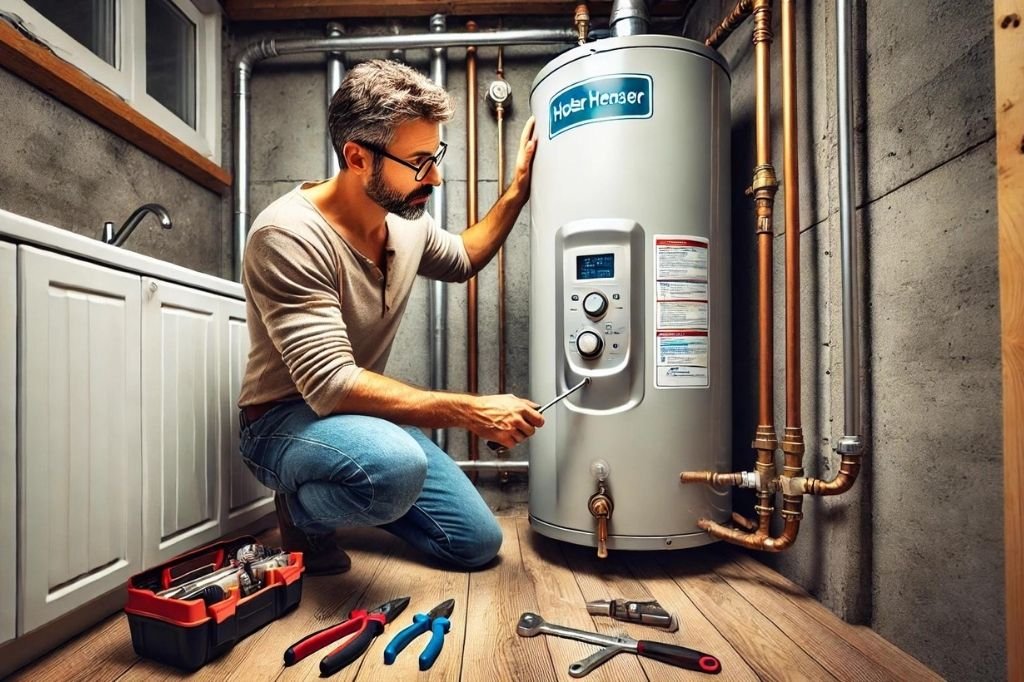Awakening to find that your morning shower is nothing beyond what a flood of cold water can an inconsiderate stir. Before you call an expert, consider some fundamental no hot water troubleshooting strategies that could be useful to you distinguish and conceivably right the issue yourself. This guide will walk you through the most widely recognized issues and answers for reestablish your hot water without expecting to plunge into your reserve funds for an expensive fix.
Check Your Water Warmer’s Power Source
The most vital phase in troubleshooting any hot water issue is to guarantee that your water radiator is getting power. For electric water warmers, check your home’s electrical switch box. A stumbled electrical switch is a typical reason for unexpected loss of capacity to your water radiator. Flip the breaker now and again to reset it and guarantee a firm association.
In the event that you have a gas water warmer, verify whether the pilot light has gone out. Assuming it has, your radiator’s manual ought to have directions on the best way to securely relight it. It’s vital to adhere to these directions exactly to stay away from any dangers. On the off chance that the pilot light won’t remain lit, this could be an indication of a flawed thermocouple or a stopped up pilot hole, the two of which require proficient consideration.
Guaranteeing that your water warmer has a legitimate power supply is a fundamental initial step that can frequently tackle the issue with insignificant exertion and no cost.
Inspect the Water Radiator Thermostat
Another normal issue that can cause an absence of hot water is a breaking down indoor regulator. The indoor regulator controls the temperature of the water by controlling the warming component or gas stream to the burner. On the off chance that it is set excessively low, you probably won’t get the hot water you anticipate. Check to guarantee the indoor regulator is set to a legitimate temperature, ordinarily somewhere in the range of 120°F and 140°F.
If changing the temperature doesn’t take care of the issue, the indoor regulator itself may be blemished. For an electric water radiator, this could include supplanting one or the two indoor regulators situated behind the entrance boards. A multimeter can be utilized to check for congruity — in the event that there’s no coherence, the indoor regulator needs supplanting.
On account of gas radiators, a defective indoor regulator could keep the gas valve from opening, which prevents the warmer from warming the water. Supplanting a gas indoor regulator can be mind boggling and could require an expert.
Examine the Warming Component in Electric Water Heaters
Assuming your home has an electric water radiator and you’ve verified that the indoor regulator is working accurately, the following stage is to review the warming components. Mineral development on the warming components can fundamentally decrease their proficiency or influence them to altogether fizzle.
To check the warming components, you will initially have to switch off the capacity to the warmer at the electrical switch, channel the tank, and eliminate the components. Outwardly investigate them for extreme pitting or scaling. You can likewise test every component with a multimeter to guarantee it has coherence. Assuming a component has fizzled, supplanting normally a direct errand can reestablish your hot water.
Look for Indications of Residue Construct up
After some time, silt can collect in the lower part of your water radiator’s tank. This silt layer can protect the water from the radiator’s burner or components, diminishing the unit’s proficiency or keeping it from warming the water by any means. Flushing your water warmer every year is a decent practice to forestall this issue.
To flush the tank, connect a nursery hose to the tank’s channel valve and run it to a fitting waste region. Guarantee the capacity to the water radiator is switched off, open the channel valve, and let the water stream until clear. On the off chance that the water doesn’t clear following a couple of moments, or on the other hand assuming you notice a lot of dregs in the depleted water, this could demonstrate a more huge issue.
When to Call a Professional?
On the off chance that you have attempted these troubleshooting steps yet have no hot water, it very well might be an ideal opportunity to call an expert handyman. A few issues, for example, profound dregs develop, harmed inward parts, or gas line issues, are best taken care of by somebody with preparing and experience.
Furthermore, routine upkeep performed by an expert can broaden the existence of your water warmer and assist with forestalling future issues. This incorporates more exhaustive examinations and changes that can improve the presentation and productivity of your water radiator.
By following these no hot water troubleshooting tips, you can frequently tackle straightforward issues rapidly and at next to zero expense. Notwithstanding, perceiving when to bring in an expert can save you from committing expensive errors that could raise the issue. Remain warm and guarantee your showers are easily hot by keeping your water radiator in ideal condition.

